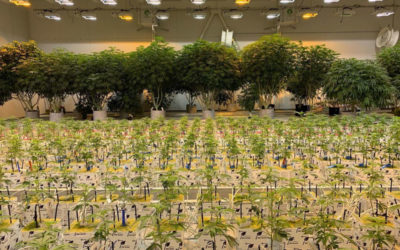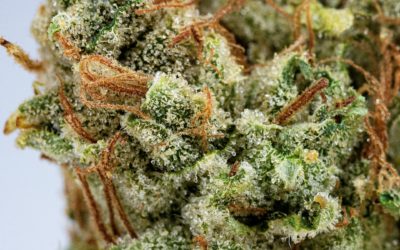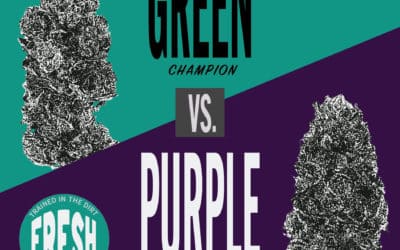Even with 8 years of legal cannabis under our belt, there’s a huge misconception surrounding weed that’s still persistent as ever.
The days of “reefer madness” sensationalism might be behind us, but this pesky myth holds firm in the face of rapidly dissipating stigma and fear.
Yep, we’re talking about THC percentages on weed, and the commonly-held belief among cannabis consumers and detractors alike that these numbers hold valuable information.
Let’s set the record straight, once and for all: They don’t.
The reliability of testing? Dubious. And the assumption that high THC content and high potency are synonymous? Flawed.
Of course, if you’re shopping for CBD flower, it’s a little different. You’ll need to look at the numbers to determine THC and CBD ratios.
In any other situation, though? Forget about them.
Using THC percentage as the single determinant of what constitutes good weed is like using fat content as your basis for determining whether or not something is nutritious. You might arrive at the correct conclusion some of the time.
But you’ll be misled more often than not.
It works for alcohol, so why wouldn’t it work for a cannabis strain?
People rely on “proof” to tell them how drunk they’ll get with alcohol, so it’s logical there should be a similar measure for cannabis. After all, responsible consumption when you’re smoking weed is important.
The problem? “Proof” is a reliable measurement of intoxicating effects. There’s a direct correlation between ABV (alcohol by volume) and how much alcohol enters your bloodstream.
The THC correlation, as we’ll establish, is nowhere near as clearcut.
Alcohol also has consistent potency within a batch. For instance, a fifth of vodka has the same ABV whether it was the first in its batch to be bottled or the last.
We can’t say the same for cannabis. The amount of THC in a strain can vary 10-15% depending on where on the plant the flower was harvested from. Buds on the top of the cannabis plant have the most THC. These numbers decrease the further down on the plant you go.
Producers get to handpick which product they send off to be tested. Unsurprisingly, a lot of them choose buds from the tops of the cannabis plants.
You might see 32% THC on the label, but there’s no guarantee you’ll get nugs from the part of the plant that’s testing that high.
When you consider the unreliability of cannabis testing, the notion that weed today has more THC than it did several decades ago and the fears surrounding “high THC cannabis” prove unfounded.
We really can’t say with certainty that cannabis strains 50 years ago were weaker when we don’t have a sound way to gauge strength.
The Entourage Effect
The variance of THC percentages within a batch isn’t the only reason to be wary of THC numbers.
Even if it could be measured accurately, THC content doesn’t give you many clues as to how high you’ll get.
We’ll be the first to admit: it seems like it would. If THC is the compound in cannabis that gets you high, then logic follows that the higher the THC percentage, the more potent the flower’s psychoactive effects.
But the truth is, THC isn’t alone in giving cannabis its effects. It’s just one part of the equation.
Cannabis is a complex plant. There are thousands of different cannabinoids, as well as flavonoids, terpenes, and tannins, that come together and interact to shape your cannabis experience.
THC interacts with your body’s unique endocannabinoid system differently depending on which of these other compounds it’s paired with. We call this the entourage effect.
While other cannabinoids remain shrouded in mystery, THC’s psychoactivity is well-established. But by no means is it the lone psychoactive component of cannabis. It’s just the component we currently have the best scientific understanding of.
A strain that’s testing on the lower end, maybe around 12-18%, can get you just as ripped as a strain with 32% total THC on the label. Try it sometime if you don’t believe us….ya know, for science.
Why put THC potency on the label, then?
The short answer is: lawmakers believed it was better than nothing.
Blame decades of prohibition, but we currently know little to nothing about the way most of the active ingredients in cannabis interact with the endocannabinoid system.
THC percentage is the official measure of potency in the cannabis industry because, and ONLY because, a better metric doesn’t exist yet.
Unfortunately, for individuals who suffer from paranoia and avoid high THC flower or high THC strains, this presents a problem. If a strain that’s testing at 32% THC and a strain thats testing at 18% THC can be as strong as the other, how does one shop responsibly?
The answer is simple: Ask for something on the lighter side. If a budtender presents you with an option that has a higher THC percentage than you usually go for, trust their judgement.
Some of the mildest strains we have in the store regularly test at 30% THC, but you’d never guess it based on effects alone.
Perhaps someday there will be a metric of cannabis effects that more accurately portrays what you’re in for when you smoke. But until then, resist the urge to look to THC levels for guidance in our purchasing decision.
If you’ve been using THC percentage as a way to shop, do yourself an enormous favor: stop.
We know it defies logic a little bit. If you were to do that with alcohol, it’d be downright irresponsible.
But alcohol and cannabis are very different substances. To try to gauge their potency in the same way is well-intentioned, but misguided.
Potent weed with potent psychoactive effects comes in all shapes, sizes, and THC levels. So does mild weed.
The key to getting it? Communicate what you’re looking for, and be open-minded.
Ask any budtender, and they’ll tell you: learning about the meaningless of the numbers marks a turning point in their relationship to cannabis.



